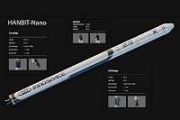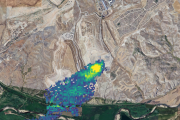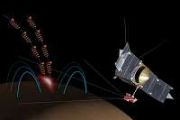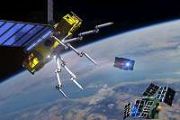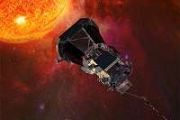
Copernical Team
SUNY team finds alternative cosmic source of gold in published collaborative research
 Dr. Shing Chi Leung, SUNY Poly assistant professor of physics, in collaboration with Mr. Chun-Ming Yip, Dr. Ming-Chung Chu and Dr. Lap-Ming Lin, from the Chinese University of Hong Kong, published a peer reviewed article in The Astrophysical Journal. They discovered that the explosion of a low-mass neutron star can be the alternative cosmic source for the Lanthanides and other heavy elements, in
Dr. Shing Chi Leung, SUNY Poly assistant professor of physics, in collaboration with Mr. Chun-Ming Yip, Dr. Ming-Chung Chu and Dr. Lap-Ming Lin, from the Chinese University of Hong Kong, published a peer reviewed article in The Astrophysical Journal. They discovered that the explosion of a low-mass neutron star can be the alternative cosmic source for the Lanthanides and other heavy elements, in UK Space Agency backs Orbit Fab's innovative refueling interface, GRASP
 Orbit Fab, a frontrunner in on-orbit refueling services, has announced a pivotal partnership with the UK Space Agency to develop the GRASP (Grasping and Resupply Active Solution for Propellants) active refueling interface in the UK. This strategic collaboration aims to establish the necessary components for in-space refueling, a transformative concept set to redefine space mission operations.
Orbit Fab, a frontrunner in on-orbit refueling services, has announced a pivotal partnership with the UK Space Agency to develop the GRASP (Grasping and Resupply Active Solution for Propellants) active refueling interface in the UK. This strategic collaboration aims to establish the necessary components for in-space refueling, a transformative concept set to redefine space mission operations. N. Korea says spy satellite launch successful
 North Korea said Wednesday it had succeeded in putting a military spy satellite in orbit after two previous failures, as the US led its allies in condemning the launch as a "brazen violation" of UN sanctions.
A rocket carrying the satellite blasted off Tuesday night from North Phyongan province, flew along its designated path and "accurately put the reconnaissance satellite 'Malligyong-1' on
North Korea said Wednesday it had succeeded in putting a military spy satellite in orbit after two previous failures, as the US led its allies in condemning the launch as a "brazen violation" of UN sanctions.
A rocket carrying the satellite blasted off Tuesday night from North Phyongan province, flew along its designated path and "accurately put the reconnaissance satellite 'Malligyong-1' on Does spaceflight increase men's risk of erectile dysfunction?
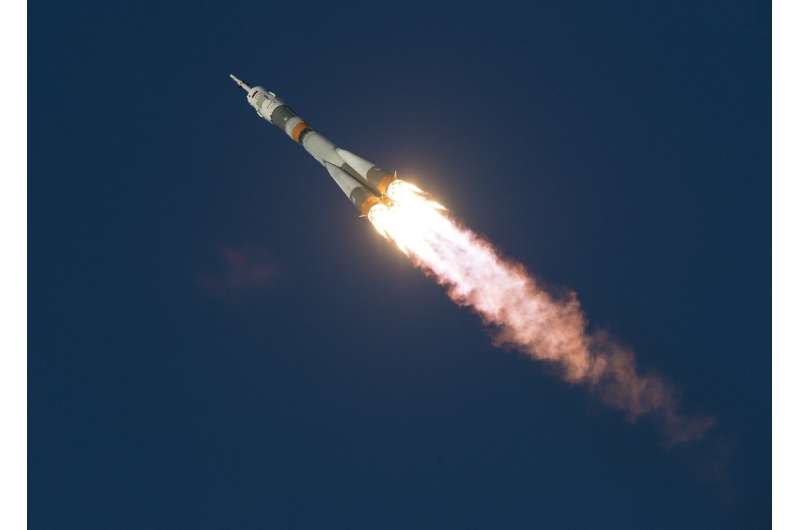
During missions into space, astronauts are exposed to high levels of galactic cosmic radiation and weightlessness. Simulation experiments in male rats indicated that these aspects of spaceflight can negatively affect vascular tissues relevant to erectile dysfunction, even after a period of long-term recovery.
The research, which is published in The FASEB Journal, indicated that vascular alterations are induced by relatively low doses of galactic cosmic radiation and, to a lesser extent, simulated weightlessness, primarily through increases in oxidative stress. Treatment with different antioxidants could counter some of these effects.
"With manned missions to outer space planned for the coming years, this work indicates that sexual health should be closely monitored in astronauts upon their return to Earth," said corresponding author Justin D. La Favor, Ph.D., of Florida State University. "While the negative impacts of galactic cosmic radiation were long-lasting, functional improvements induced by acutely targeting the redox and nitric oxide pathways in the tissues suggest that the erectile dysfunction may be treatable."
More information: Neurovascular dysfunction associated with erectile dysfunction persists after long-term recovery from simulations of weightlessness and deep space irradiation, The FASEB Journal (2023).
Unlocking Europe’s satellite navigation potential at NAVISP Industry Days

Leading positioning, navigation and timing experts from companies and research institutions across Europe met last week at ESA’s NAVISP Industry Days, a two-day workshop dedicated to discussing trends and opportunities in this field.
North Korea says spy satellite launch successful
 North Korea said Wednesday it had succeeded in putting a military spy satellite in orbit after two previous failures, as the United States led its allies in condemning the launch as a "brazen violation" of UN sanctions.
A rocket carrying the satellite blasted off Tuesday night from North Phyongan province and "accurately put the reconnaissance satellite 'Malligyong-1' on its orbit", state-ru
North Korea said Wednesday it had succeeded in putting a military spy satellite in orbit after two previous failures, as the United States led its allies in condemning the launch as a "brazen violation" of UN sanctions.
A rocket carrying the satellite blasted off Tuesday night from North Phyongan province and "accurately put the reconnaissance satellite 'Malligyong-1' on its orbit", state-ru US 'strongly condemns' N. Korean space launch
 The White House on Tuesday strongly condemned North Korea over its space launch, calling it a "brazen violation" of UN sanctions that could destabilize the region.
The launch "raises tensions, and risks destabilizing the security situation in the region and beyond," National Security Council Spokesperson Adrienne Watson said in a statement.
North Korean state media reported early Wednes
The White House on Tuesday strongly condemned North Korea over its space launch, calling it a "brazen violation" of UN sanctions that could destabilize the region.
The launch "raises tensions, and risks destabilizing the security situation in the region and beyond," National Security Council Spokesperson Adrienne Watson said in a statement.
North Korean state media reported early Wednes Hydrogen detected in lunar samples, points to resource availability for space exploration

Cairt and Wivern Earth Explorer candidates go forward

ESA has reached a significant milestone in its commitment towards a deeper understanding of Earth's dynamic processes and addressing pressing environmental challenges with the selection of two new candidates – Cairt and Wivern – to progress to the next development phase as part of the process of realising the Agency’s eleventh Earth Explorer satellite mission.
SDI Announces New Tech Demo Competition for Government Modernization
 The Space and Defense Innovation (SDI) team has officially announced the launch of its Ignite Competition, a pivotal event designed to bridge the gap between groundbreaking technology and the federal sector's needs. This demo competition presents an unprecedented opportunity for tech companies to directly demonstrate their innovative solutions to key federal sector experts, furthering the U.S.'s
The Space and Defense Innovation (SDI) team has officially announced the launch of its Ignite Competition, a pivotal event designed to bridge the gap between groundbreaking technology and the federal sector's needs. This demo competition presents an unprecedented opportunity for tech companies to directly demonstrate their innovative solutions to key federal sector experts, furthering the U.S.'s 











